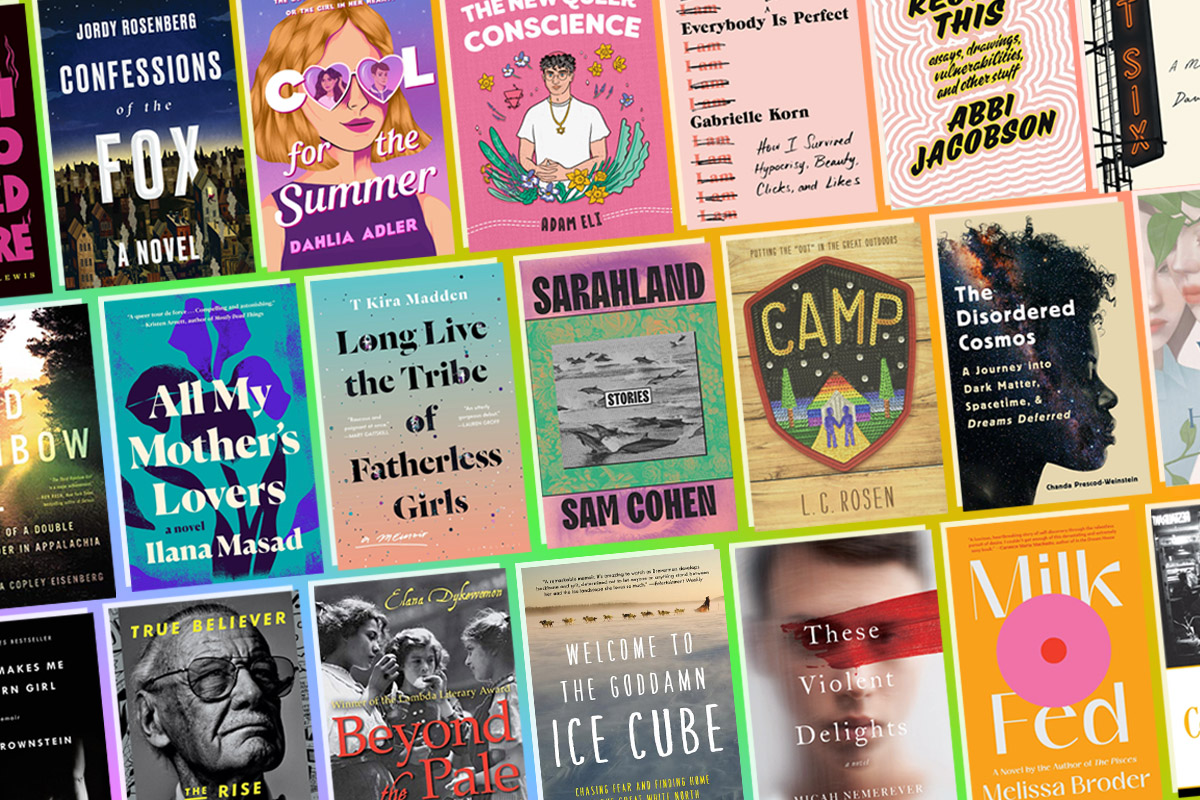Alma readers asked for it, so obviously we are here to deliver: 30 book by queer Jewish authors you should absolutely read. We’ve covered many of these books before, so be sure to click through to read interviews and reviews where relevant.
Happy Pride month!! But also, every month is Pride Month here at Alma, so make these queer writers part of your ongoing reading practice. And, you can shop this list on Bookshop, a platform supporting independent bookstores. Let’s dive in:
1. “Surviving Autocracy” by Masha Gessen
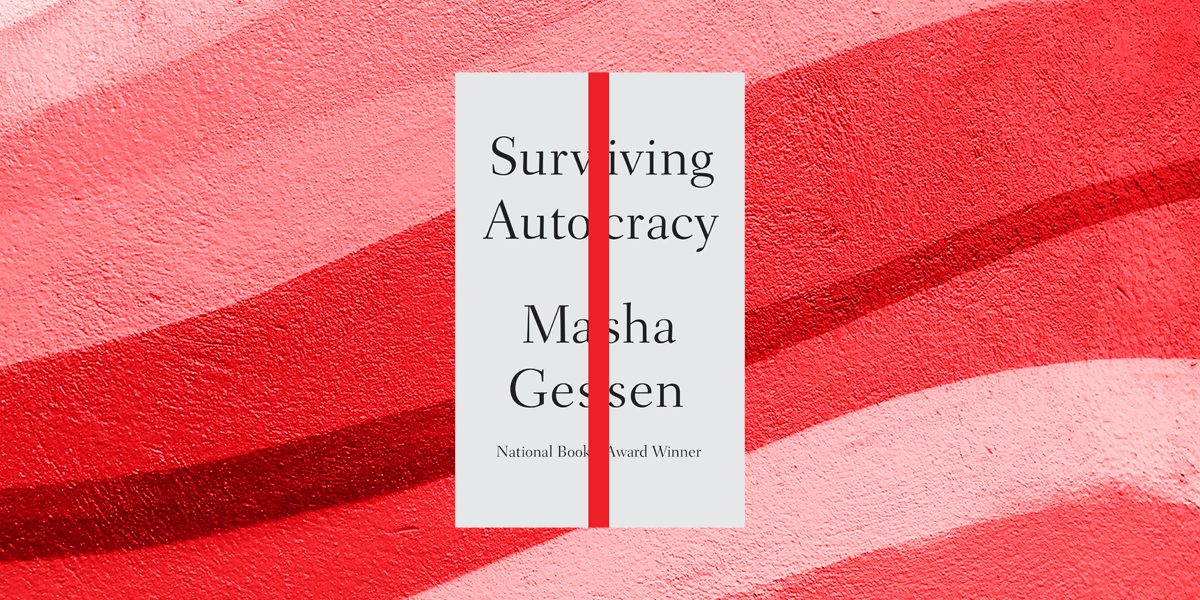
Masha Gessen is a Russian American Jewish journalist who is an outspoken critic of Russian president Vladimir Putin. Born in the Soviet Union, they immigrated to the U.S. as a teen and then returned to Russia in 1991. Their latest book, based on a 2016 essay in the New York Review of Books, is about how the U.S. is close to becoming an autocratic state. Other works by Masha include “The Man Without a Face: The Unlikely Rise of Vladimir Putin,” “The Future Is History: How Totalitarianism Reclaimed Russia,” and “Where the Jews Aren’t: The Sad and Absurd Story of Birobidzhan, Russia’s Jewish Autonomous Region.” All their books are worth reading on understanding totalitarianism, modern Russia and so much more.
“When Gessen speaks about autocracy, you listen,” writes Jennifer Szalai in the New York Times Book Review.
2. “These Violent Delights” by Micah Nemerever
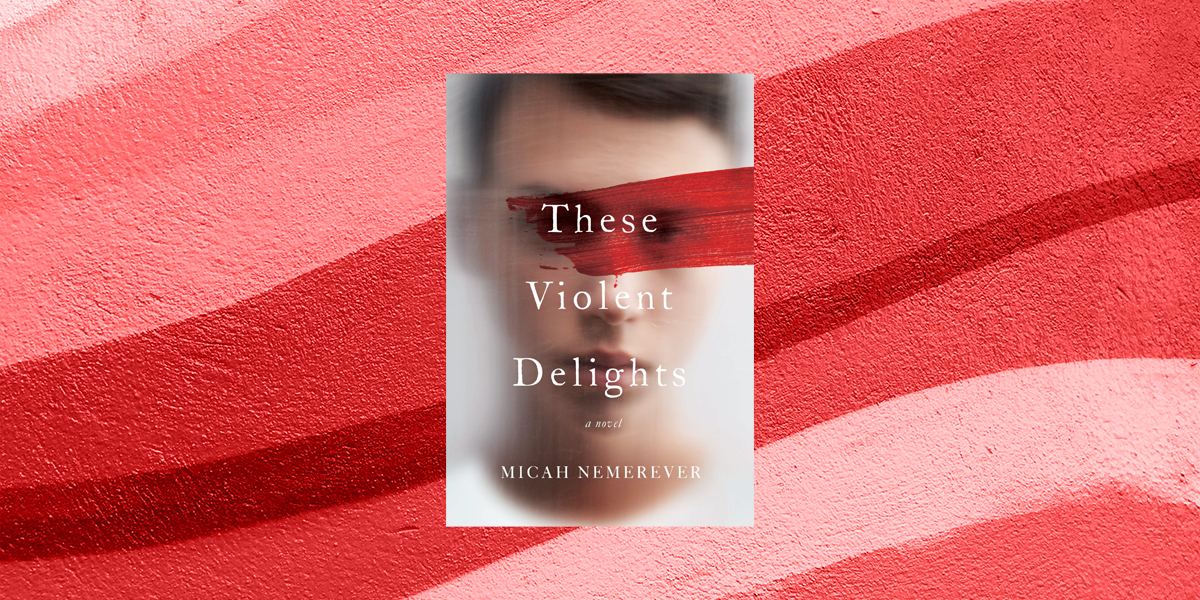
Just read this description from the blurb and tell me you don’t want to read this book: “‘The Secret History’ meets ‘Lie with Me’ in Micah Nemerever’s compulsively readable debut novel—a feverishly taut Hitchcockian story about two college students, each with his own troubled past, whose escalating obsession with one another leads to an act of unspeakable violence…. As their friendship spirals into all-consuming intimacy, they each learn the lengths to which the other will go in order to stay together, their obsession ultimately hurtling them toward an act of irrevocable violence.” I mean!! “These Violent Delights” is the story of Paul and Julian, two 17-year-old undergraduates in early 1970s Pittsburgh who plot the murder of a stranger.
“Tapping deep into the malaise of his ‘queer, Jewish, isolated’ teenage self, Nemerever creates a twisting tale tracing the ever-fluctuating psychological and behavioral dynamics between two budding sociopaths,” writes the Seattle Times.
Get it here. | Read an essay on ‘These Violent Delights’ here.
3. The Girl with the Red Balloon by Katherine Locke
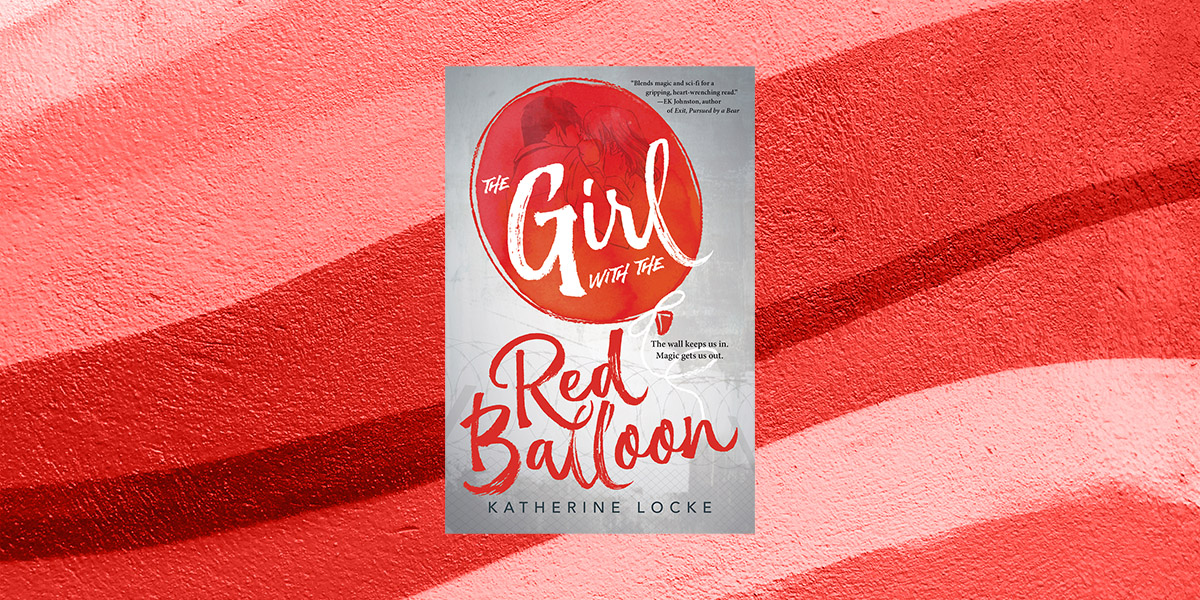
Ellie Baum is a 16-year-old on a school trip to Berlin; she is the first member of her family to return to the country since her grandfather escaped a death camp during the Holocaust. At the Berlin Wall Memorial, she’s suddenly back in time in 1988 East Berlin — when the Wall is still standing. Ellie has to figure out who is using dark magic to try to change history — while working with a group that use balloons and magic to help people escape over the Wall. A remarkable YA historical fiction.
Locke is also the co-editor of the forthcoming “This Is Our Rainbow: 16 Stories of Her, Him, Them, and Us,” the first LGBTQA+ anthology for middle-graders with Nicole Melleby, and “It’s a Whole Spiel: Love, Latkes, and Other Jewish Stories,” a collection of YA Jewish stories with Laura Silverman.
4. “Continuum” by Chella Man (Pocket Change Collective)
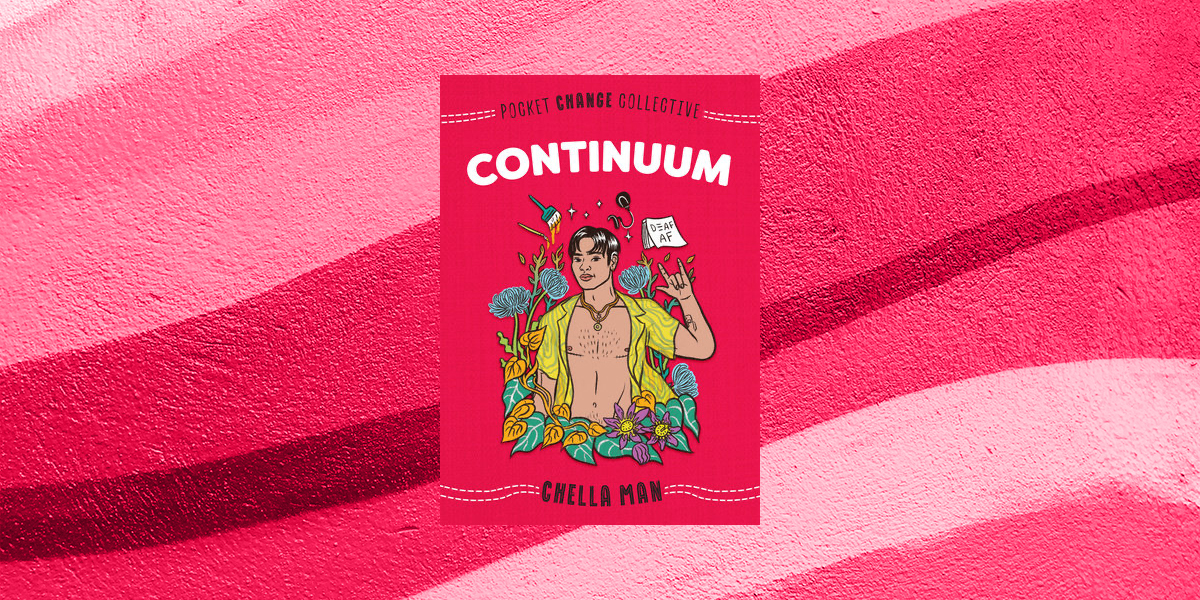
“All of who I am lies on a continuum. My identity cannot be encompassed by a single term,” writes Chella Man, a Jewish Chinese actor, artist and activist. “My ethnicity. I am biracial. I am both Jewish and Chinese. My gender. I am genderqueer, existing outside of the binary of ‘boy’ and ‘girl.’ My disability. I am Deaf with access to some sound through two cochlear implants. My sexuality. I am pansexual, loving beyond ‘straight’ or ‘gay.’” In this essay, part of the Pocket Change Collective (“a series of small books with big ideas from today’s leading activists and artists”), Chella Man beautifully writes of his experiences within his Deaf, transgender, genderqueer, Jewish and Chinese identities.
5. “I Might Regret This: Essays, Drawings, Vulnerabilities, and Other Stuff” by Abbi Jacobson
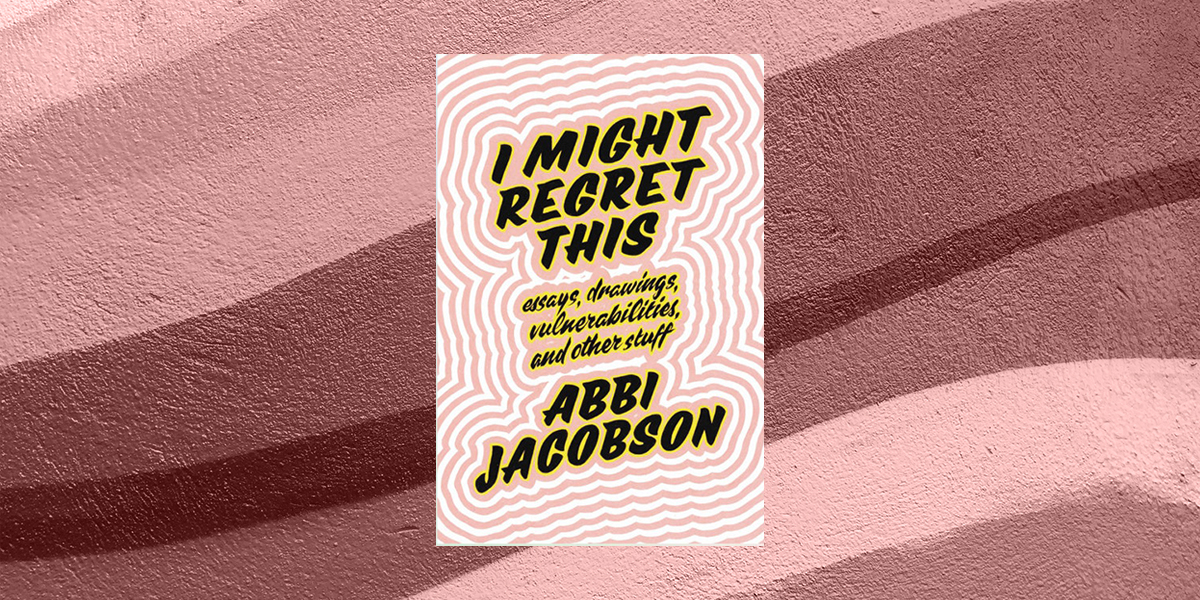
Abbi Jacobson stole our hearts on “Broad City.” The Jewish bisexual actress’s debut essay collection (she had published two coloring books earlier) is the story of a three-week road trip she took across the country. It’s a vulnerable and intimate look at Abbi, and the structure of the road trip is a perfect way to tell her story.
“I think the heightened version of me in Broad City — and this is something I love about my job — is that I get to play all of the anxiety, fear, and nervousness physically. Abbi’s this blubbering idiot, and it’s so rare that someone rants all of this anxiety and fear out loud, so sometimes when they yell ‘cut!’ I’m like, ‘what just happened?’ No one really expresses all of their uncertainties and anxieties out loud like that, and I get to work some of that out through my character. I’m way more internalized in real life,” Abbi told PAPER Magazine soon after the publication. “I think that in terms of the writing in this book, a lot of the essays are not heightened in that way. A lot of them are more real, and I get to write my personal anxieties and fears and doubts in a totally different way where I get to explore that part of myself, much in the same way I get to do on the show, but in a very different format.”
6. “The New Queer Conscience” by Adam Eli (Pocket Change Collective)

Activist, writer and Voices4 founder Adam Eli (you may know him from Instagram, @adameli) wrote a book on queerness and activism, and it is absolutely essential for all young people (and old people. And people who don’t identify as “young” or “old”!). Eli draws on his background as an activist, and on his Jewish and queer identities, to write this important manifesto about how “queer people anywhere are responsible for queer people everywhere.” The book is dedicated to his “grandmothers Freda Braunstein, Rita Werner, and all of the women, queer and not, Jewish and not, who make the world go round.” Eli takes his readers by the hand on a journey through his adolescence growing up queer in an Orthodox Jewish community and his own understanding of what being queer means today.
7. “The Rabbi Who Prayed with Fire” by Rachel Sharona Lewis
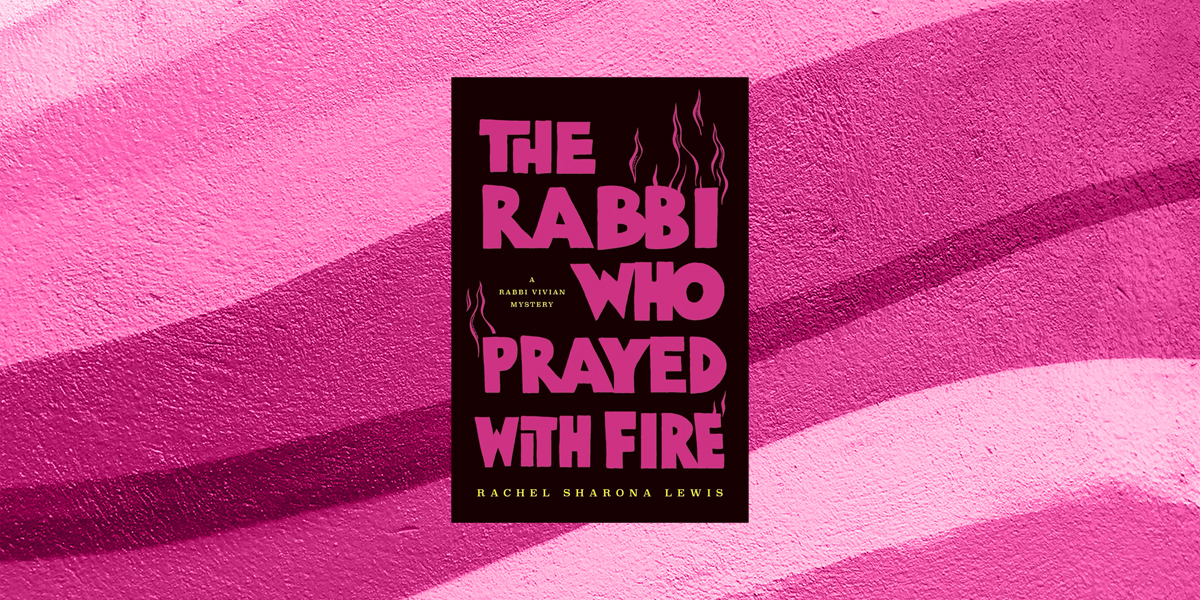
“The Rabbi Who Prayed with Fire” is a queer rabbinic mystery novel that tells the tale of gay Providence rabbi Vivian, whose synagogue catches on fire. Its pages are rife with commentary on things from synagogues’ bureaucratic structures, to police brutality, to the difficulties that come with dating as a queer female rabbi. “In a lot of cases, Vivian’s specific experiences are really particular to young Jews, queer Jews, and young queer Jews in progressive circles. It makes me really happy that I can mirror people’s experiences,” Rachel told Alma about writing the character of Rabbi Vivian. A fun, Jewish whodunit that gets at serious social issues. What more could you want?!
Get it here. | Read an interview with Rachel Sharona Lewis here.
8. “Milk Fed” by Melissa Broder
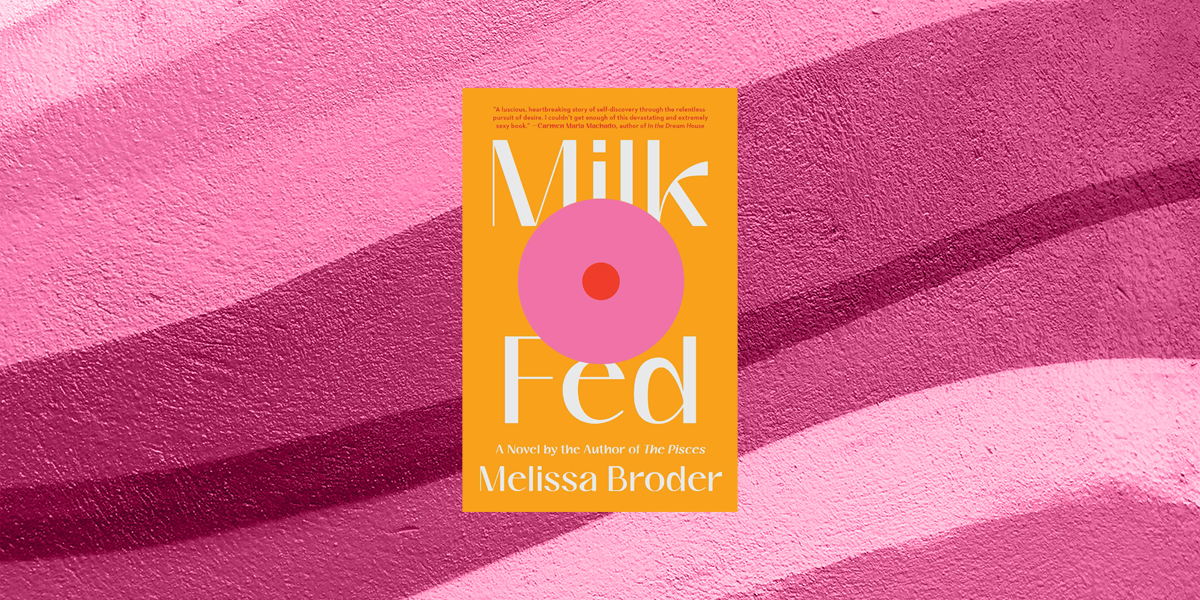
“Milk Fed” tells the story of Rachel, a 24-year-old struggling comedian living in Los Angeles who obsessively counts calories and has a toxic relationship with her mom. One day, her therapist challenges her to “detox” from communication with her mother — as in, not speak to or text her for 90 days. Soon, Rachel meets Miriam, an unapologetically fat Orthodox Jewish woman who works at a frozen yogurt shop. Miriam slowly gets Rachel to eat, and enjoy, what she’s eating, while Rachel begins to fall for Miriam. There’s also a dreamy subplot about Rabbi Judah Loew ben Bezalel, the famous rabbi of Prague who made a golem.
As Kelsey Grashoff wrote in Alma, “While she makes some serious missteps with Miriam and doesn’t quite understand or respect all the nuances of observant Jewish life or Miriam’s boundaries, Rachel comes to appreciate and develop her own Judaism, taking the pieces that are most meaningful to her and allowing them to shape her view on the world.” It’s a moving, funny and beautiful story — of love, queerness, finding oneself, and recovering from disordered eating. And golems.
Get it here. | Read an essay on “Milk Fed” here.
9. “A Year Without a Name” by Cyrus Grace Dunham
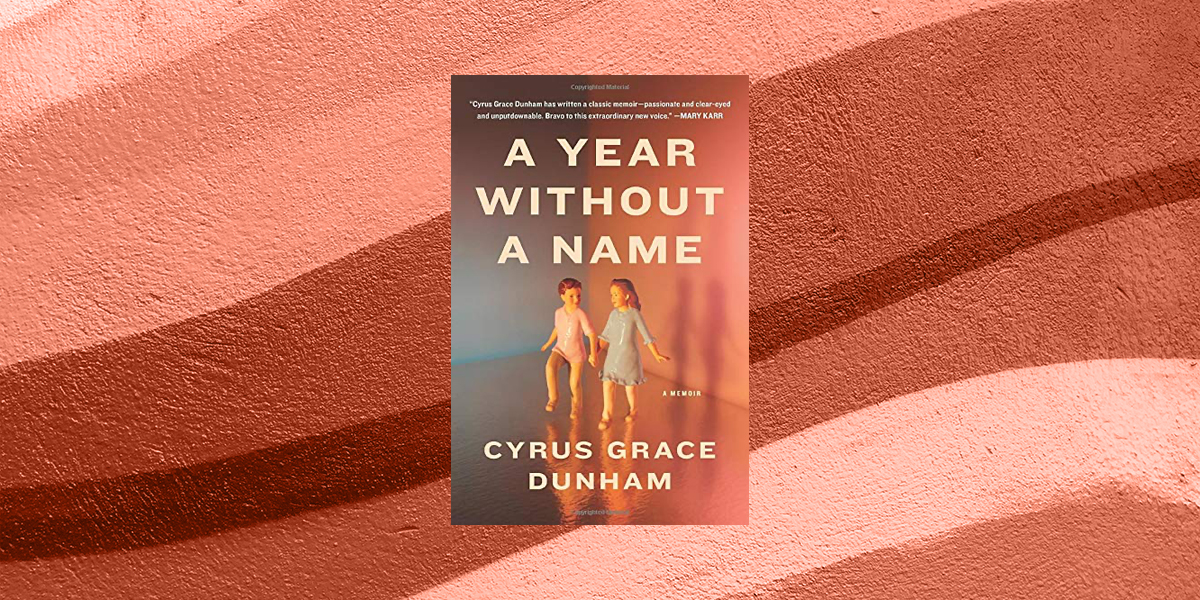
“I could try to tell a story that ends with resolution, but the only way to succeed would be to lie. If I lied, I would be whole at the end of the story. Wholeness would be possible,” writes Cyrus Grace Dunham in the opening lines of this powerful memoir. Dunham, a writer and organizer, wrote a powerful memoir about gender identity and figuring oneself out in the shadow of a famous sister (as in, Lena Dunham). (You can read an excerpt here.)
From the book jacket: “Dunham’s fearless, searching debut brings us inside the chrysalis of a transition inflected as much by whiteness and proximity to wealth as by gender, asking us to bear witness to an uncertain and exhilarating process that troubles our most basic assumptions about identity. Written with disarming emotional intensity in a voice uniquely his, ‘A Year Without a Name’ is a potent, thrillingly unresolved meditation on queerness, family, and selfhood.”
10. “Everybody (Else) Is Perfect: How I Survived Hypocrisy, Beauty, Clicks, and Likes” by Gabrielle Korn
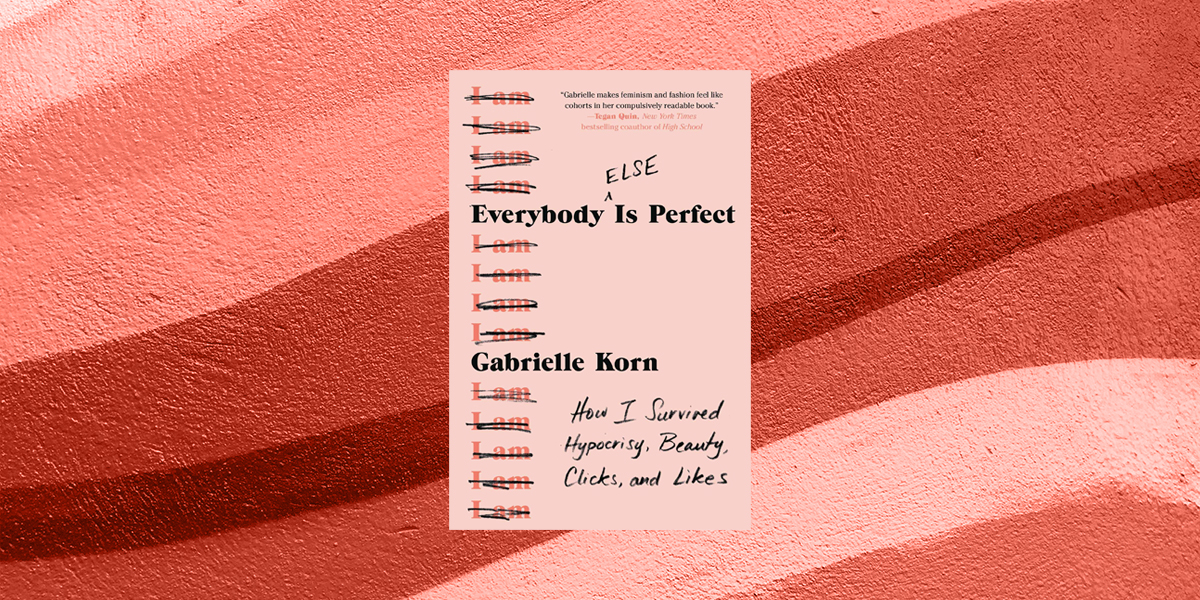
“No one wants to think of themselves as privileged,” Gabrielle Korn told Alma earlier this year. “When you are part of minority groups, in some way, it’s hard to reconcile what you know about the way those groups of people are treated versus how you’re treated. People don’t read me as Jewish, they don’t read me as gay. They read me as just some blonde girl. And that has allowed me access to a lot of spaces that I don’t know if I would have gotten. I know that I felt really different from my co-workers, but in hindsight I looked a lot like them. It’s this feeling of being the only one — but still being in the room.”
When she was 28, Gabrielle was promoted to editor-in-chief of Nylon magazine, the same day the print edition of the magazine folded. Her memoir is the story of her journey in media, but also of her own journey to find herself as a person. Throughout the book, she opens up about her struggles with disordered eating and how the body positivity movement isn’t always so positive. A memoir for our modern media age.
Get it here. | Read an interview with Gabrielle Korn here.
11. “Lot Six” by David Adjmi
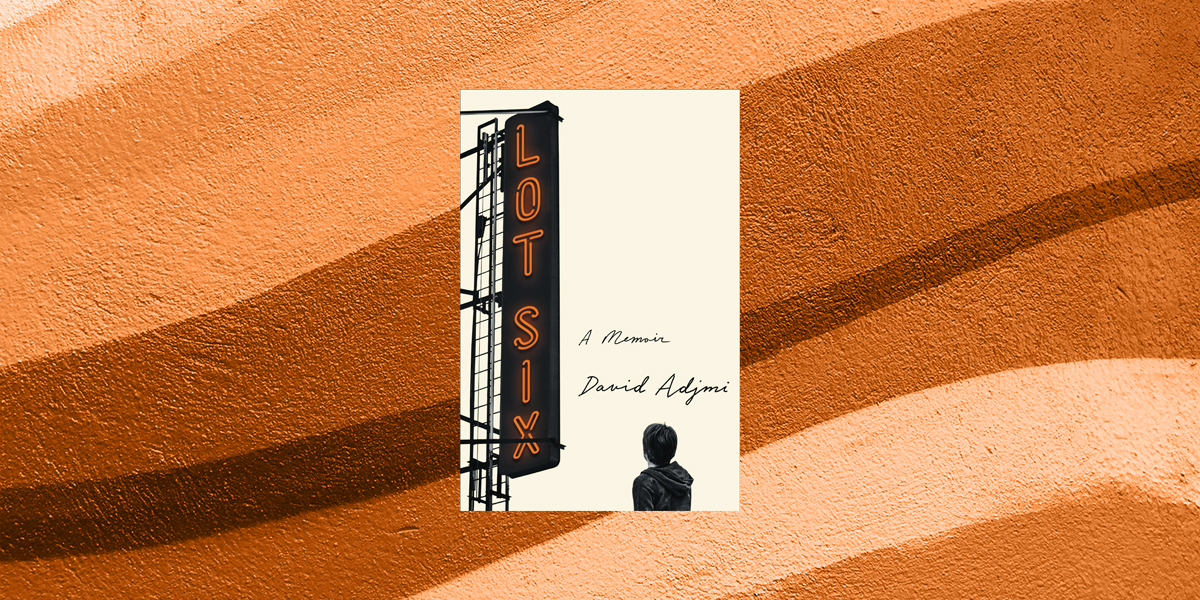
Playwright David Adjmi’s debut memoir charts his journey from the Syrian Jewish community in Midwood to debuting his delightfully sacrilegious work, “Stunning,” at Lincoln Center in 2009. As Michael Zalta wrote in Alma, “To me, reading ‘Stunning’ was like being given a flashlight in a dark forest of self-doubt. David quickly became a role model, who had blazed the trail for queer Arab Jews like myself, the likes of whom cannot be found in ‘Angels in America’ or on ‘Transparent.'”
Adjmi tells Alma: “The title of the book, Lot Six, refers as you know to SY [Syrian Jewish] slang for queer — but writing the book, I’ve come to see the term as shorthand for a kind of cultural queerness, or at least the part of me that’s unassimilable and can’t be conveniently slotted in a typical social matrix.”
Get it here. | Read an interview with David Adjmi here.
12. “The Disordered Cosmos: A Journey Into Dark Matter, Spacetime, and Dreams Deferred” by Dr. Chanda Prescod-Weinstein
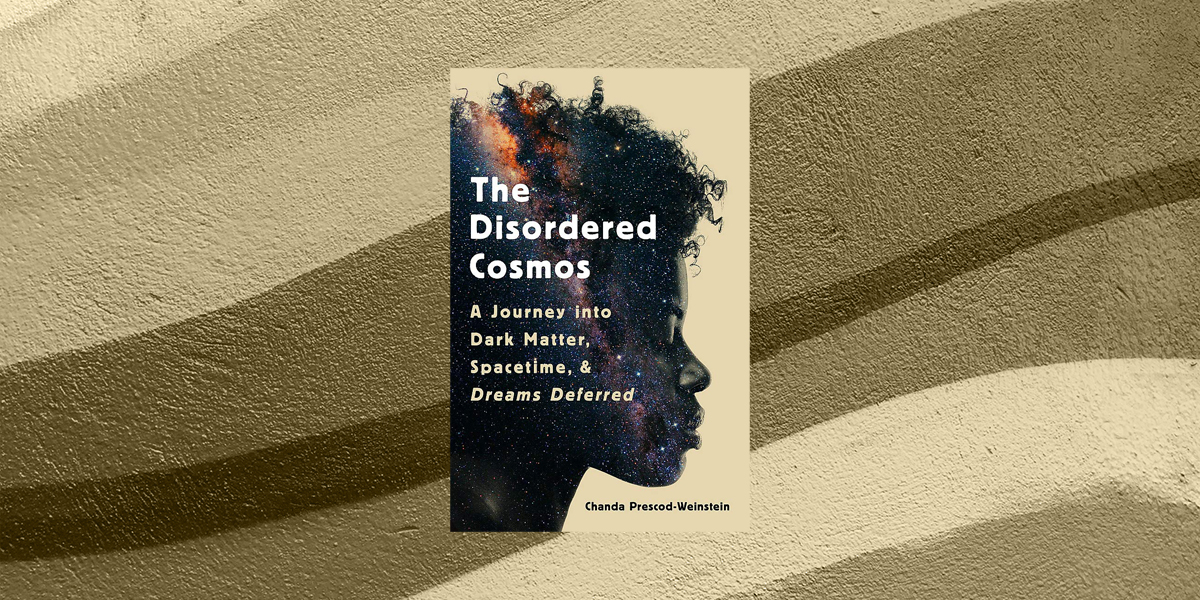
Dr. Prescod-Weinstein is a theoretical physicist whose work focuses on cosmology, neutron stars and dark matter (though she makes a compelling argument for why dark matter shouldn’t be called “dark matter”). You may already be familiar with her, if you’re one of the over 80K people who follow her on Twitter, where she grapples with racism, Judaism, science, politics and often where all those things intersect. In her book, Dr. Prescod-Weinstein brings her unique and necessary perspective to science as a Black Jewish scientist, writing for a more just world.
In publishing “The Disordered Cosmos,” she explains, “I’m thinking about Chanda at age 17. What is the book that would have said to her: Your interest is okay and beautiful, and your dreams are okay and beautiful. The thing that Carl Sagan didn’t do was tell me what a life in science for someone like me would be like, and how to handle that. I don’t know if my book is a particularly good guide on how to handle that. But I hope that my book at least says you can do it.”
Get it here. | Read an interview with Dr. Chanda Prescod-Weinstein here.
13. “True Believer: The Rise and Fall of Stan Lee” by Abraham Riesman
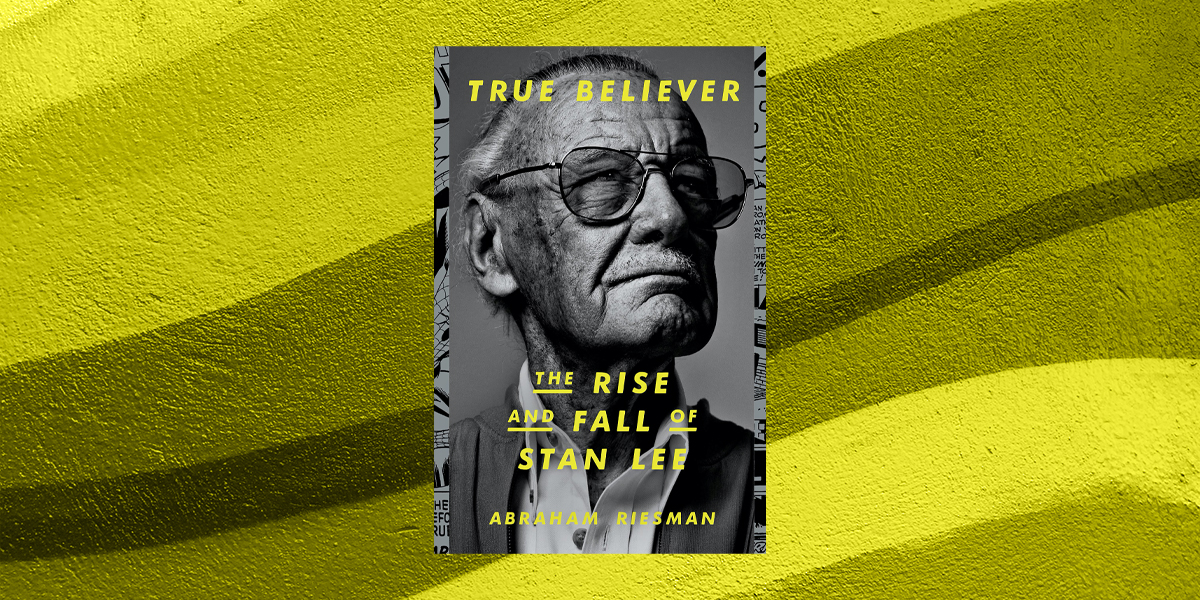
Abraham Riesman writes, “Stan Lee’s story is where objective truth goes to die.” Lee, born Stanley Martin Lieber in 1922, was a master of creating legends about himself. He told so many stories — so many false stories — over and over again that he eventually believed them to be true. Riesman does a great job of unpacking these myths and half-truths, speaking to many people in Lee’s orbit, and writing a comprehensive biography of the Marvel comics legend.
“I’m not trying to say Stan was more saint or more sinner, or have final judgment on him. There are a few morals of the book, I would hope, and one of them is: There are no superheroes. It sounds so simple but humans, especially Americans, have to be reminded over and over and over again that celebrities are not different. Celebrities are not another species. Celebrities have not been granted superpowers. Celebrities are people, they’re people who happen to have become famous,” Riesman tells Alma.
Get it here. | Read an interview with Abe Riesman here.
14. “The Cosmopolitans” by Sarah Schulman
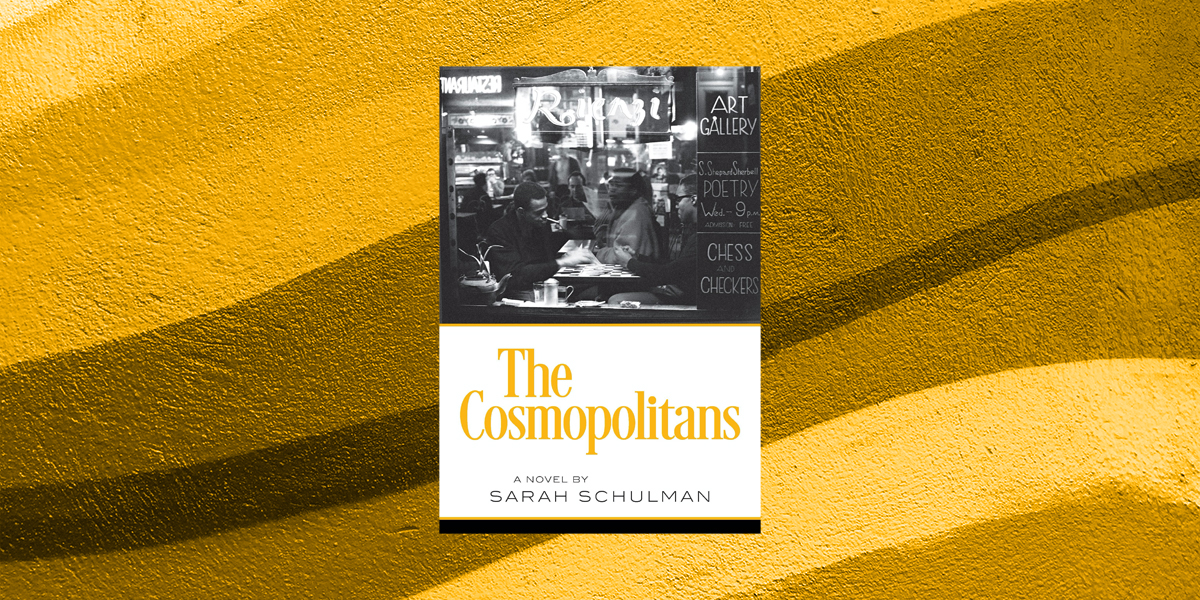
Sarah Schulman is an American novelist, playwright, nonfiction writer, screenwriter, gay activist and AIDS historian. (What a strong first line of a Wikipedia article!) She’s also Jewish, and a prolific writer: She’s written 11 novels, seven works of nonfiction and two plays.
For this list, we’re gonna talk about “The Cosmopolitans,” her second-most recent novel. In a beautiful essay in the Los Angeles Review of Books, Hugh Ryan writes, “While no one book can contain the revelations of an entire career, ‘The Cosmopolitans’ is a novel that has deep roots in Schulman’s nonfiction, which I would broadly classify as an attempt to explore, catalog, and explain the queer experience in America today through the specific lens of her own life.” The novel is set in 1958 New York City and tells the story of Bette, a middle-aged secretary who was driven away from her family in Ohio; Earl, Bette’s neighbor and best friend, a gay Black man; and Hortense, Bette’s young cousin who appears one day at Bette’s home.
Consider this your motivation to read at least one Sarah Schulman work in your lifetime (and hopefully many, many more).
15. “Beyond the Pale” by Elana Dykewomon
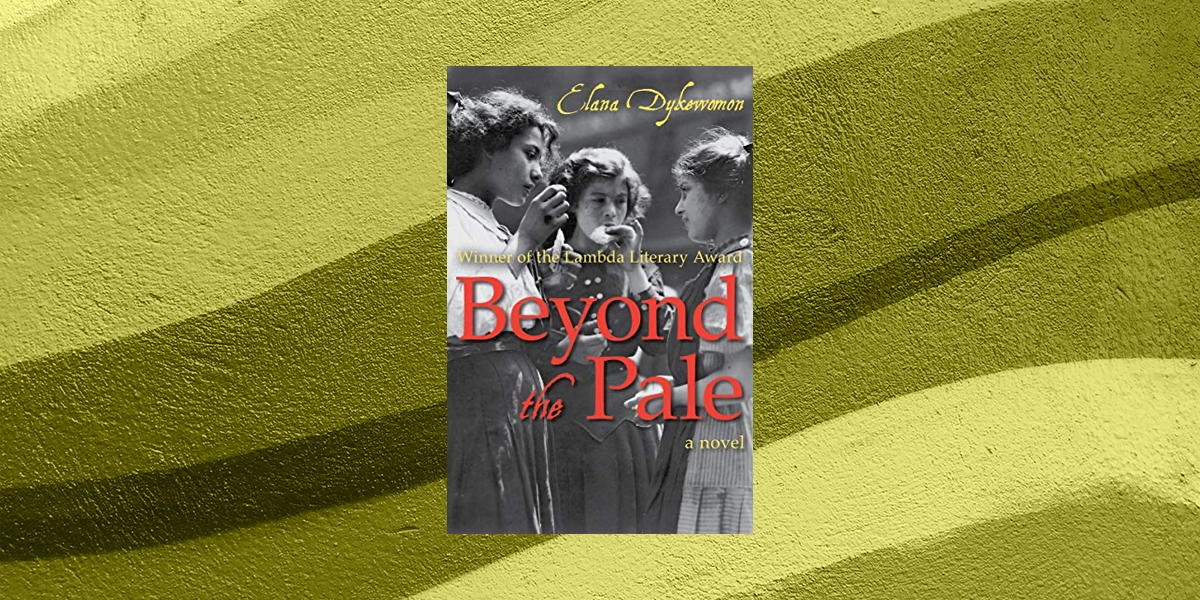
Elana Dykewomon, born Elana Nachman, is a Jewish lesbian activist and writer who describes herself as “a Lesbian Separatist, descendant of the Baal Shem Tov, typesetter, [and a] poet.” She changed her last name to Dykewomen for her second book, “an expression of her strong commitment to the lesbian community and a way to keep herself ‘honest,’ since anyone reading the book would know the author was a lesbian,” and for her third book, she became “Dykewomon” so as to “avoid etymological connection with men.”
Her novel “Beyond the Pale” is the story of two Jewish women: Gutke Gurvich, a midwife from the Russian shtetl who immigrates to New York, and Chava Meyer, a Russian Jew whose birth is attended to by Gutke, who survives a pogrom. As the Jewish Book Council writes, “Both epic and intimate, the book takes readers deep inside diverse worlds, with harrowing and heroic stories of midwifery, the Russian pogroms, and early lesbian life.”
16. “Camp” by L.C. Rosen
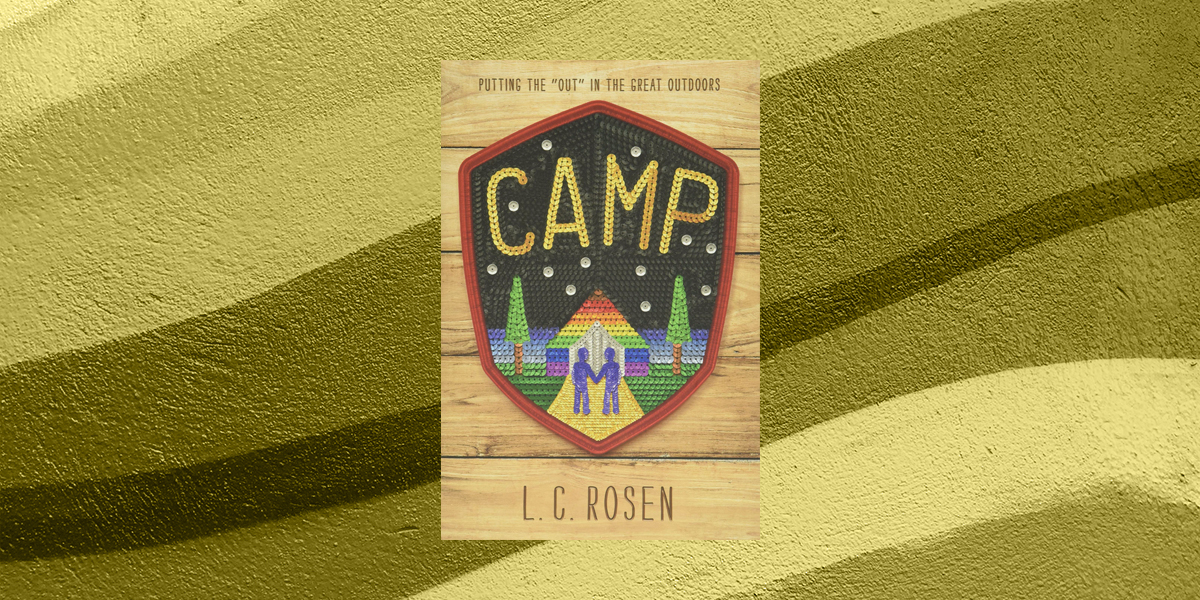
“Camp” takes place at the LGBTQ Camp Outland, where theater-loving Randy Kapplehoff is determined to finally win over his eternal summer crush, Hudson Aronson-Lim, by transforming himself into “Del” — a masculine, athletic alter-ego. It’s a story about the masks we all sometimes wear, and about how toxic masculinity can creep into the most accepting, queer-friendly spaces. But it’s also a delightful story of summer love between two Jewish boys.
For young queer readers, Rosen hopes they take away that “there’s no right way to be queer, and anyone who tells you as much is (intentionally or not) hurting you. That masc and femme are both types of drag, and you should be able to pick one, the other, or some combination of the two to dress yourself in any day. That just because straight kids will often see you as just the queer kid doesn’t mean you can’t be some other kind of kid on top of that — jock, nerd, theater kid, goth, whatever. You get to try on all these identities, same as the straight kids do, and take the parts of them you like the best to assemble who you want to be. You get to be whoever you want to be. Don’t let anyone tell you you don’t. But also — and this is important for teen readers — be who you need to be to keep yourself safe, too. You can keep who you are like a secret inside if you need to. That’s one special talent all queer people have.”
Get it here. | Read an interview with L.C. Rosen here.
17. “The Cooking Gene: A Journey Through African American Culinary History in the Old South” by Michael W. Twitty
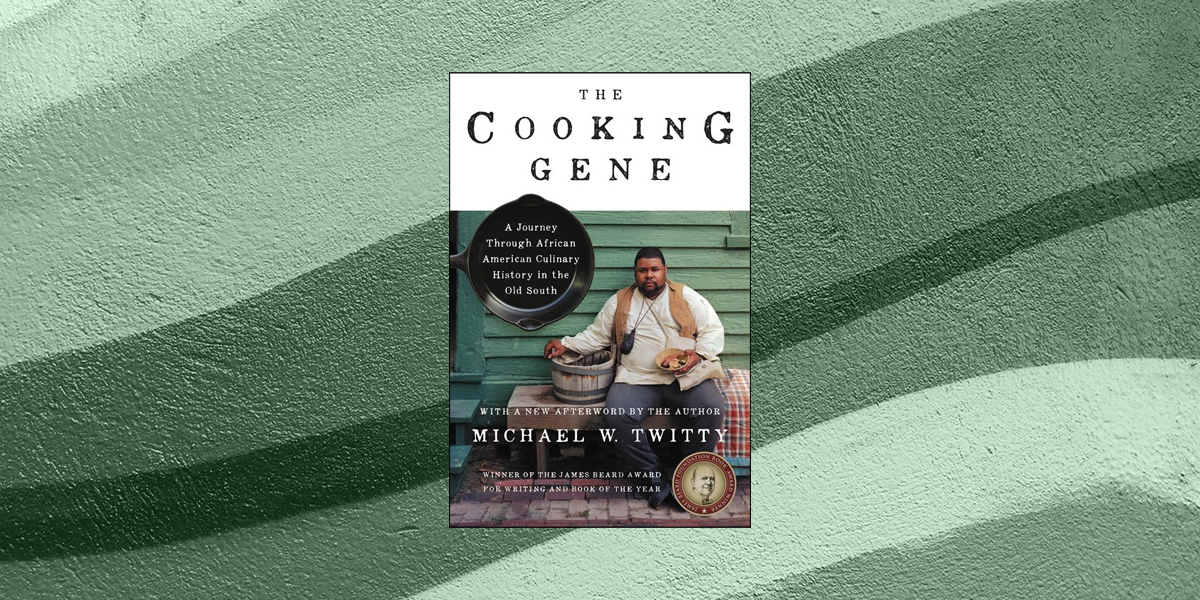
In 2012, “Afro-ashke-phardi” culinary historian Michael W. Twitty went on a “Southern Discomfort Tour” to trace the history of his black ancestors through food. He documents his journey in “The Cooking Gene: A Journey Through African-American Culinary History in the Old South,” where he also draws parallels to Jewish history. As NPR wrote, “As someone who is Black, gay and Jewish, Twitty is emblematic of everything neo-Nazis rail against.” His reply? “America is the only place on earth where I’m possible, and that is the dirty little secret behind these hate groups. They are here to take away the possibilities that America the Ideal represents.” His memoir is his personal story, but also a story of Southern cuisine and food culture. Twitty is currently working on his second book, “Kosher Soul,” a book that blends Black and Jewish food traditions, set to be published in 2022. We cannot wait.
Get it here. | Read an interview with Michael W. Twitty here.
18. “Sarahland” by Sam Cohen

“Sarahland” is a short story collection of 10 stories centered on various women named Sarah. There’s a Jewish college student named Sarah dealing with hook-up culture and sexual assault. There’s Sarah of the Bible, who, in Cohen’s writing, is a trans woman who sleeps with Hagar to become the real parents of Ishmael. There’s a “Buffy”-loving Sarah who writes fan-fiction; there’s an aging lesbian Sarah who literally becomes a tree. Each Sarah is told through a queer Jewish lens, with tenderness and care.
“For most of my life, deep questioning of gender and representation of non-normative sexualities were pretty fringe discussions. For me, it’s really amazing to put this book out at a time where public discussions about queerness, transness, rape culture, etc. are already happening. It feels like the book can be part of a bigger conversation than I imagined being part of, where, you know, my mom’s 70-year-old suburban friends already have a context in which to understand these stories, which might not have been the case 10 years ago,” Sarah explained to Alma.
Get it here. | Read an interview with Sarah Cohen here.
19. “The Third Rainbow Girl: The Long Life of a Double Murder in Appalachia” by Emma Copley Eisenberg
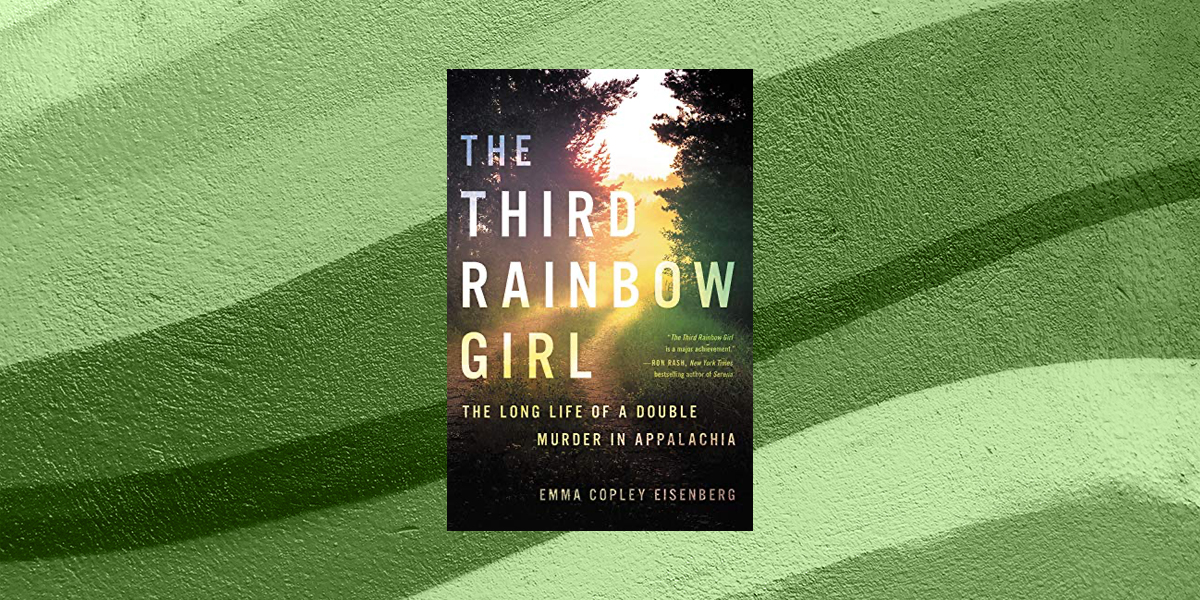
Emma Copley Eisenberg’s debut book is a true crime story about the murder of two young women in West Virginia in 1980. Dubbed the “Rainbow Murders,” since the women were on their way to a festival known as the Rainbow Gathering, the crime went un-prosecuted for 13 years. In 1993, a local resident was tried and convinced for the murders, only to be released when a white supremacist serial killer admitted to them. “The Third Rainbow Girl” isn’t solely the story of the Rainbow Murders, but also of Eisenberg’s time spent living and working in Pocahontas County, West Virginia (where the murders took place).
As Eisenberg (an Alma contributor!) writes in the acknowledgements, “To write a book that is the story of events so painful to so many at the same time that is the story of my becoming was at times a strange and terrible undertaking.” The book beautifully interweaves the telling of the crime, the history of the region, and nuanced analysis of gender, class, and violence in rural America.
Get it here. | Read Emma’s essays in Alma here.
20. “Willa & Hesper” by Amy Feltman
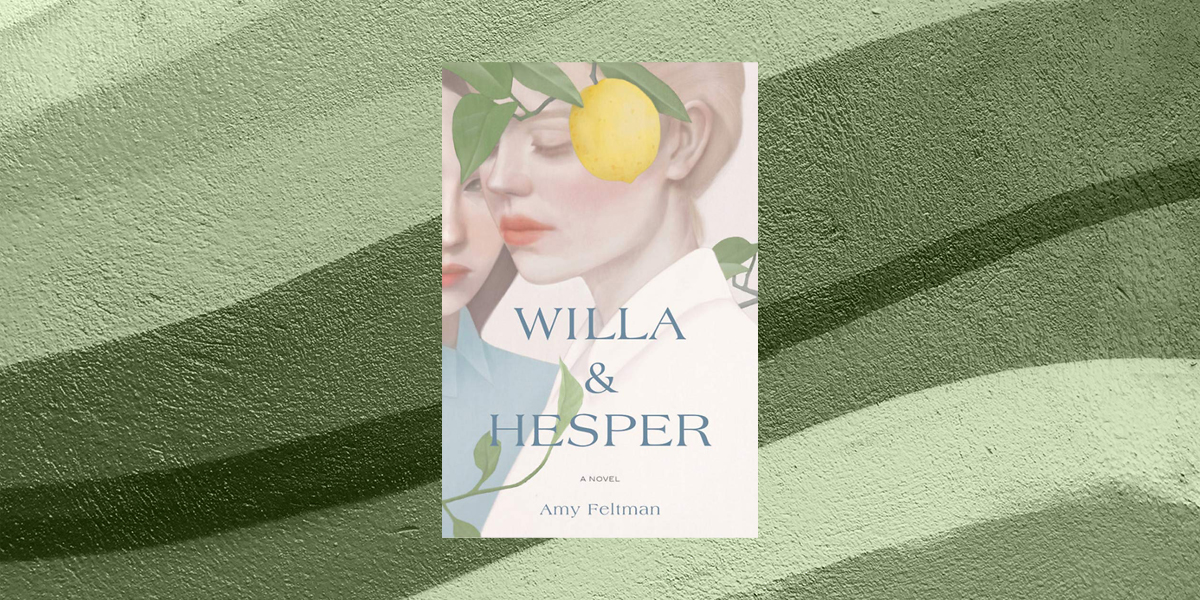
Willa and Hesper fall in love while in an MFA program, but break up — and both dive into their roots to heal from the breakup. Willa “joins a group trip for Jewish twentysomethings to visit Holocaust sites in Germany and Poland, hoping to override her emotional state. When it proves to be more fraught than home, she must come to terms with her past-the ancestral past, her romantic past, and the past that can lead her forward.” Meanwhile, Hesper “runs, following her fractured family back to her grandfather’s hometown of Tbilisi, Georgia, looking for the origin story that he is no longer able to tell.” A moving tale of heritage, queerness, and what happens when you go looking for yourself in the past.
21. “All My Mother’s Lovers” by Ilana Masad
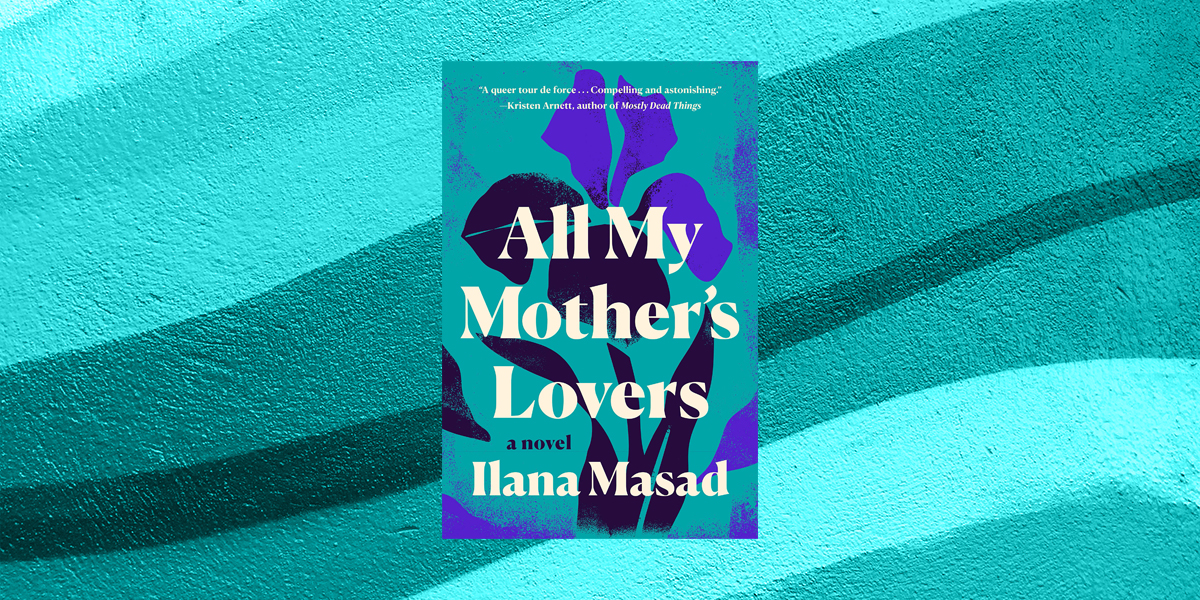
Ilana Masad’s debut novel tells the tale of a queer Jewish 27-year-old named Maggie. At the start of the novel, Maggie is in bed with her girlfriend-who-is-not-quite-her-girlfriend-yet when she gets a call from her brother telling her their mom has died in a car crash. She is numb, but immediately springs into action — buying her flights, figuring out the service at synagogue and shiva, and so on. When she gets to her parents’ house, Maggie finds letters that her mother left with her will, addressed to different men. After the funeral, she decides, she will set out and deliver them to their intended recipients. It’s a powerful story of grief and mother-daughter relationships.
“Since my queer identity has long been deeply intertwined with my own political beliefs and practices and ideals, I feel like my Jewish self is slowly catching up, or connecting, or something,” Masad told Alma.
Get it here. | Read an interview with Ilana Masad here.
22. “Becoming Eve” by Abby Chava Stein
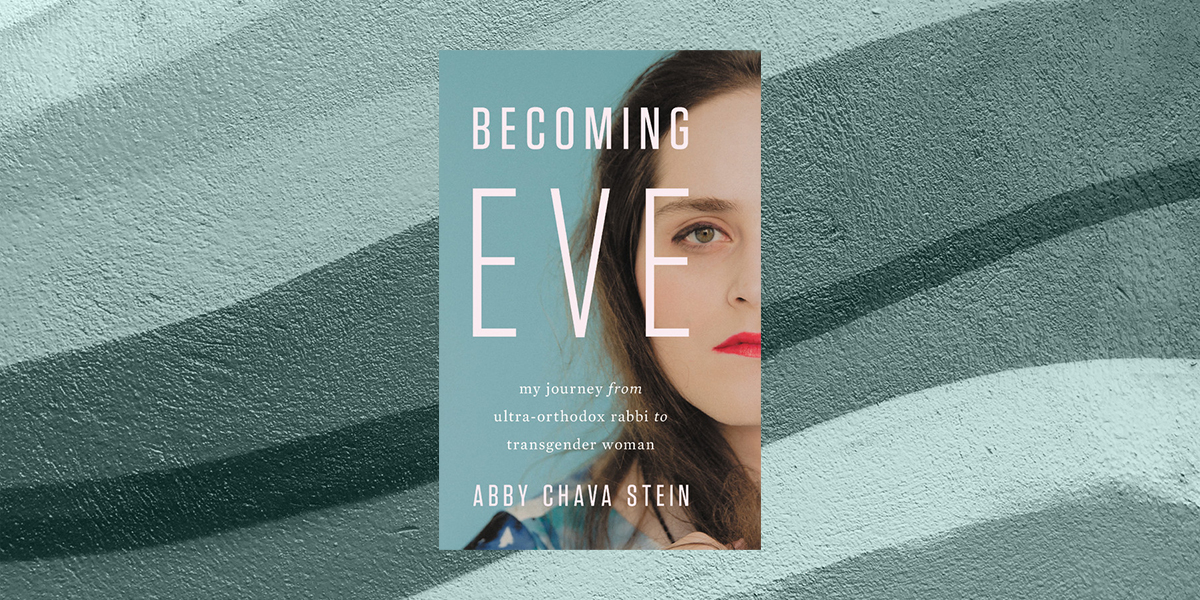
“Becoming Eve” is the story of Abby’s “two interwoven transitions: coming out of ultra-Orthodoxy, and coming out as a trans woman.” As she writes in the introduction, “I hope in these pages you will find a portrait of a life that every human being can relate to: the vulnerability and the glory, the frustrations and the revelations, the shedding of one identity and growing into another. No agenda, just my story.” Abby is a trailblazer: She grew up in an ultra-Orthodox community in Brooklyn — and was ordained as a rabbi — but her journey “off the derech” as a trans woman has made her an outspoken leader in Jewish and queer communities. We are so grateful for Abby’s voice.
Get it here. | Watch a mini-doc of Abby on Alma.
23. “Long Live the Tribe of Fatherless Girls” by T Kira Madden
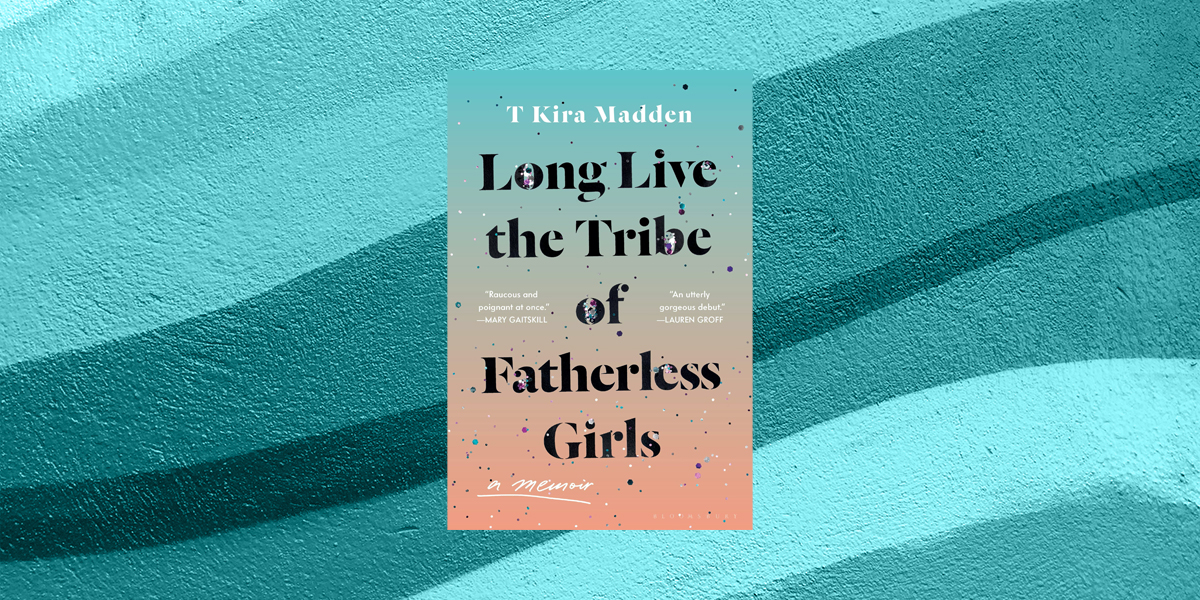
T Kira Madden’s gorgeous and remarkable debut memoir chronicles her childhood in Boca Raton, Florida, as the daughter of parents who struggled with addictions. T Kira told Alma ahead of the book’s publication that she hopes people can find themselves in her story: “I hope people feel the power of being an outsider. I hope people can recognize some version of themselves, or some element of themselves, in the book. It’s likely no one will be just like me — but they might feel that sense of being an outsider, being a former loser, having family secrets and trying to reckon with those, or having experienced assault or addiction in the household. There are so many elements of identity and pain and love in the book, and I hope people can meet me there. Not necessarily take away a moral of the story, but to know that somebody else is there. And is meeting them. And they’re not alone in that experience.”
Get it here. | Read an interview with T Kira Madden here.
24. “Jew-Ish: Reinvented Recipes from a Modern Mensch” by Jake Cohen
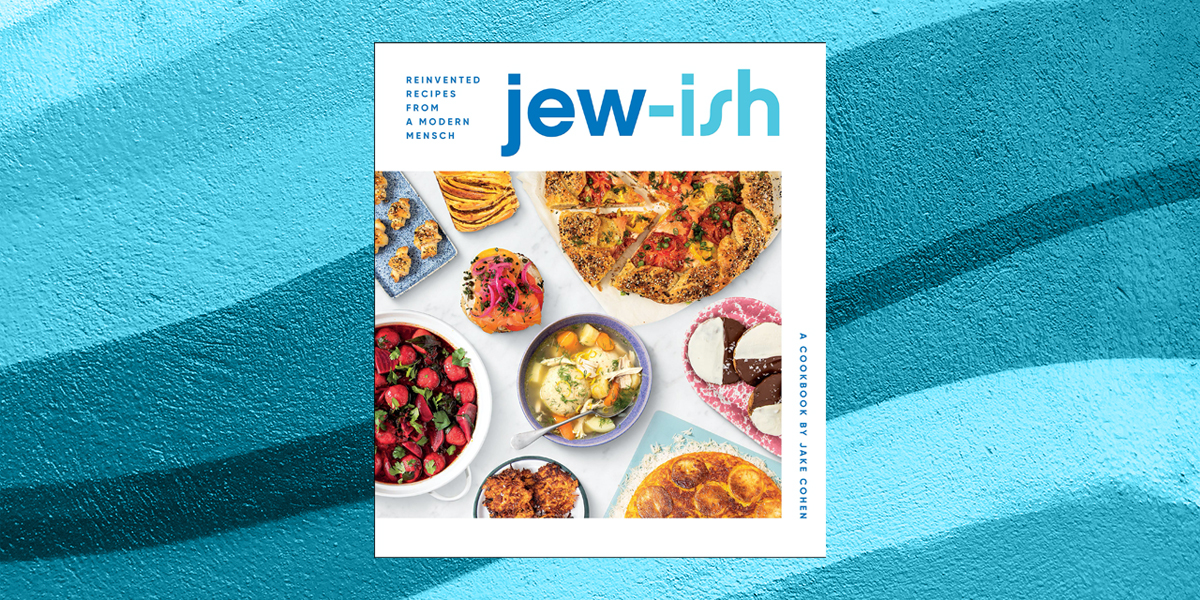
“I don’t think people should take food or the way they cook very seriously,” Jake told Alma. “They can get a lot out of it — there can be a lot of deepness and meaning to it — but I don’t think that it should be precious. To me, that was just ways to add some punch lines and remind people it’s Shabbat! I’m not asking you to make a brisket and daven [pray]. I’m asking you to have dinner with your friends and family, and take a moment to yourself. That comes across better when you add a little levity to the situation.”
“Jew-Ish” is dedicated to Jake’s husband, Alex, because “this book is nothing short of our love story,” detailing their shared Jewish journey and different Jewish upbringings. Jake is Ashkenazi and Alex is Mizrahi, and along with the delicious recipes — rose water and cardamom challah French toast, anyone? — the book explores how they’ve figured out what it means to be Jewish in 2021. The cookbook takes the reader through a bevy of foods around Shabbat dinner, with bonus chapters for Rosh Hashanah, Yom Kippur break fast, Hanukkah and Passover.
Get it here. | Read an interview with Jake Cohen here.
25. “Golem Girl” by Riva Lehrer
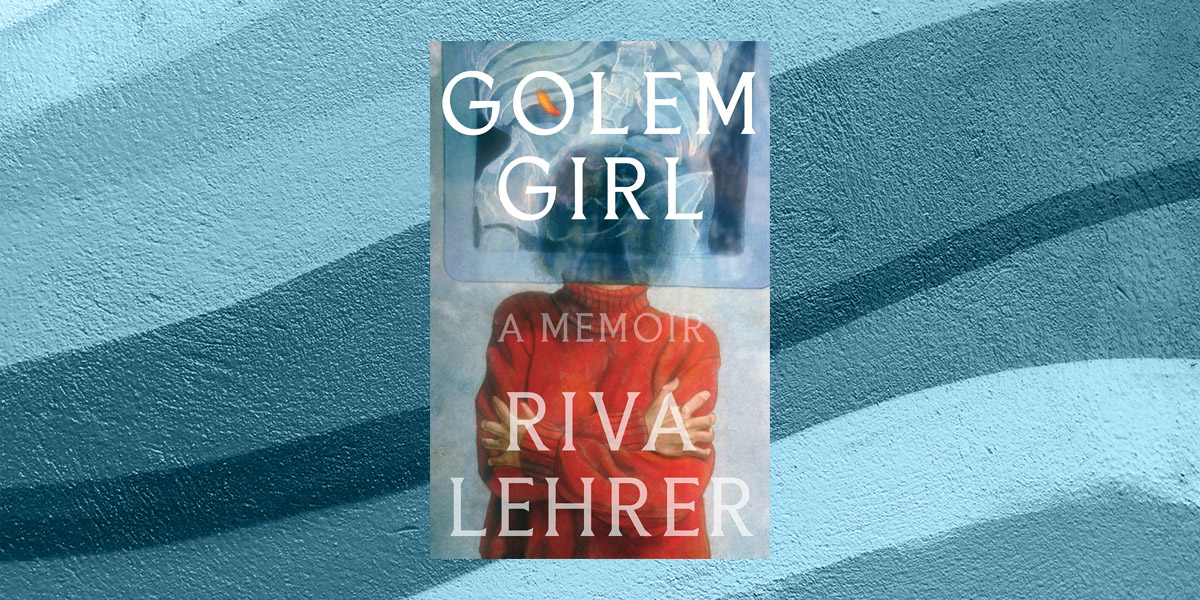
Riva Lehrer is an artist, writer and curator whose work focuses on issues of physical identity and the socially challenged body. Her book, “Golem Girl,” is an illustrated memoir of a Jewish artist born with disabilities who searches for freedom and connection in a society afraid of strange bodies. Why golem? “There is a very old legend in Jewish folklore about a rabbi who creates a monster out of mud from a river in Prague to protect the Jews who are about to be attacked by a pogrom of peasantry. And so he builds this monster, and it rounds up the miscreants, puts them in jail. In the process, the monster gets bigger and bigger and begins to have ideas of its own. And as soon as it does, the rabbi destroys it, and it falls back into a heap of mud. And so I thought about my life in those terms, in that I was built by others in a variety of senses, but in the immediate medical sense by many, many doctors,” Riva explained to NPR.
Get it here. | Read the prologue of “Golem Girl” on Alma.
26. “Confessions of the Fox” by Jordy Rosenberg
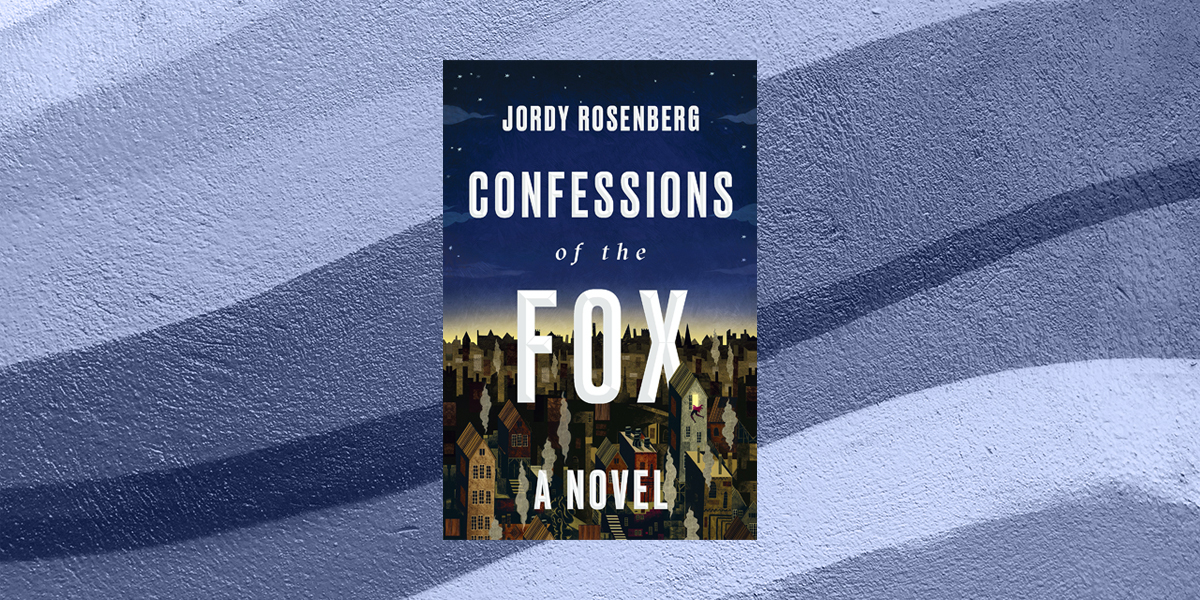
Jordy Rosenberg’s debut novel is speculative metafiction; he takes a well-known historical figure and spins the narrative into something new. In “Confessions of the Fox,” Rosenberg writes Jack Sheppard — an English folk hero who really existed, who was an 18th-century English thief who escaped from the notorious Newgate Prison — as a trans man. In real life, Sheppard’s mom sent him to a workhouse when he was 6. In Rosenberg’s telling, Sheppard’s mom, confused by her daughter who identifies as male, was sent into servitude. The main text is the fictional memoirs of Sheppard, but the footnotes are crucial to the story as well — and within the footnotes is the story of Dr. R. Voth, who found Sheppard’s manuscript and annotates it. The footnotes are both fascinating and increasingly unhinged as Dr. Voth, a trans academic, tries to uncover the mysteries of Sheppard’s memoirs while also saving his own career. Rosenberg, a trans Jewish professor of 18th century literature, gender and sexuality studies, and critical theory at University of Massachusetts-Amherst, is well suited to the subject matter.
Get it here. | Read an essay on “Confessions of the Fox.”
27. Blackfish City by Sam J. Miller

Here’s how “Blackfish City” is advertised: “A mysterious woman arrives in the floating Arctic city of Qaanaaq, in a future where rising seas have caused dramatic geopolitical changes. She’s accompanied by an orca and a polar bear, on a mission that might be bloody and might be beautiful and might be both.” If you are into scifi and dystopia fiction, this is the book for you. I loved how Vulture described it a few years ago: “The social and political resonances with 2018 are powerful, but so is the story itself, a gripping thriller that manages to traverse some very bleak territory without ever becoming heavy or dour. As much as this story is practically dystopian, it’s optimistic, too — even galvanizing — as Miller’s outcasts embark on a captivating high-stakes quest.” (And here’s a note from 2021: It still very much resonates.)
And if you’re looking for more Sam Miller, also check out “The Blade Between,” a “a queer-themed, sea salt–laced dark fantasy” set in Miller’s hometown of Hudson, New York, that explores the dark sides of gentrification,” and “The Art of Starving,” about a young gay teen struggling with an eating disorder.
28. “Welcome to the Goddamn Ice Cube: Chasing Fear and Finding Home in the Great White North” by Blair Braverman
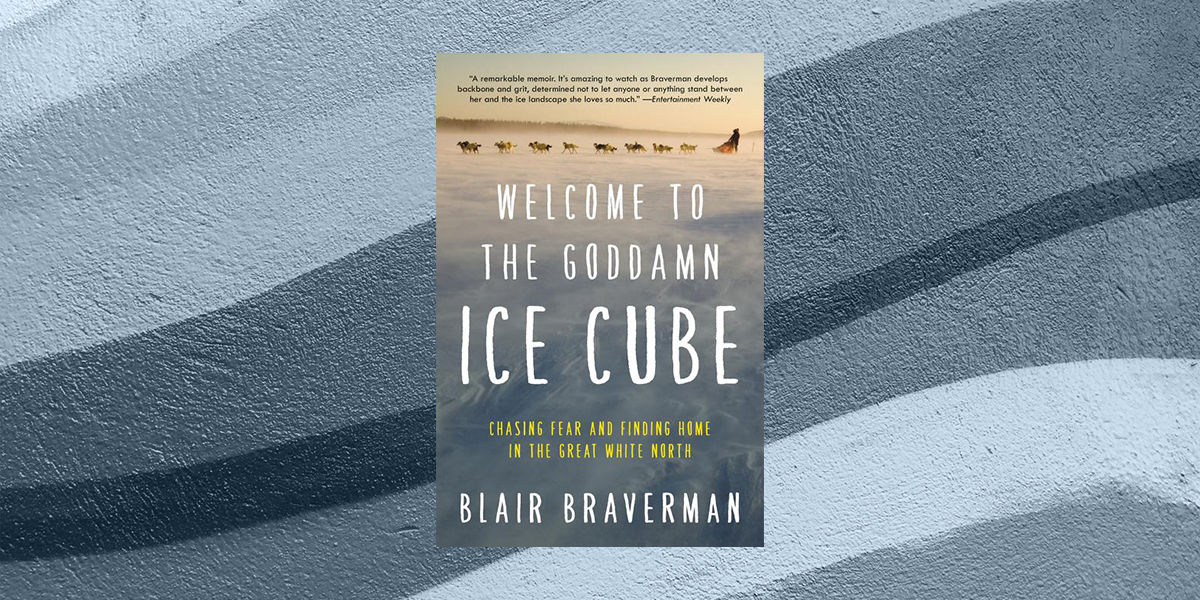
Blair Braverman’s name is particularly apt: She is a brave woman, and in 2019, became the second-ever Jewish woman to finish the grueling and historic Iditarod sled dog race. Braverman told Alma that the Iditarod is “something I’ve been dreaming about since I was a kid.” She grew up in Davis, California, and now lives in northern Wisconsin with her husband, Quince Mountain. They run BraverMountain Mushing (a portmanteau of their names), and on Twitter, Blair is an expert storyteller where she shares her life raising dogs, racing and being the only Jew in her rural Wisconsin community. (And very, very cute puppy photos.)
Her memoir is a love letter to dogsledding, a travelogue of an American in Norway, a grappling with the aftermath of sexual violence, and an honest look at a woman navigating the male-dominated world of the wilderness.
Get it here. | Read an interview with Blair Braverman here.
29. “Cool for the Summer” by Dahlia Adler

“Cool for the Summer” is a YA Jewish bisexual love triangle, featuring Lara, who is starting her senior year of high school. The guy of her dreams, Chase, is finally into her. But then Jasmine, her summer fling who just moved into town, shows up (think “Grease,” but gay and way less problematic?). Who does she go for? As Shelly Jay Shore wrote in Alma, the book is a gamechanger for queer Jewish teens. “Reading ‘Cool for the Summer’ felt like a revolution — like coming to a new place in representation. While queer characters have had an explosion of representation in young adult fiction, as have Jewish characters, a bisexual Jewish romance focusing on two girls always seemed like such a niche market… To see a book not just with bi Jewish representation but with multiple Jewish characters who relate to Judaism in different ways feels huge.”
Fun fact and deeply relevant to this book listicle: Dahlia Adler founded LGBTQReads, a site dedicated to promoting curated LGBTQIAP+ literature for all ages.
Get it here. | Read an essay on “Cool for the Summer” here.
30. “Hunger Makes Me a Modern Girl” by Carrie Brownstein
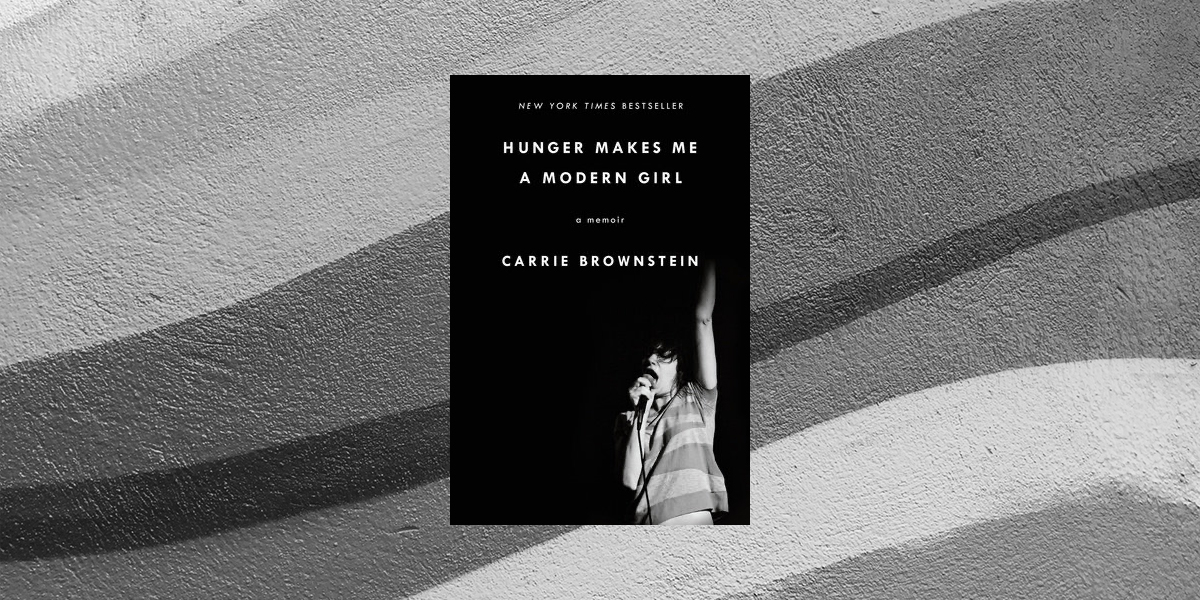
Last but very not least: Carrie Brownstein’s memoir. An actress and member of the band Sleater-Kinney, the book title comes from the lyrics of one of their iconic songs, “Modern Girl,” which is particularly apt: The memoir is about her relationship to music, with a journey into her childhood and upbringing. “The woman who emerges from this memoir seems much like the young girl she was, a very human mixture of insecure and fearless, thorny and placating, buoyant and depressed,” writes the New York Times Book Review.
“That’s why all those records from high school sound so good. It’s not that the songs were better—it’s that we were listening to them with our friends, drunk for the first time on liqueurs, touching sweaty palms, staring for hours at a poster on the wall, not grossed out by carpet or dirt or crumpled, oily bedsheets. These songs and albums were the best ones because of how huge adolescence felt then, and how nostalgia recasts it now,” writes Brownstein in her memoir. If you love her music, or if you just love music, period, you will love this memoir.
Get it here. | Read an essay on the Jewishness of Sleater-Kinney here.
Happy reading!
Disclosure: This post contains affiliate links, which means we may receive a commission if you click a link and purchase something that we have linked to. While clicking these links won’t cost you any extra money, they will help us keep this site up and running. Thanks!
